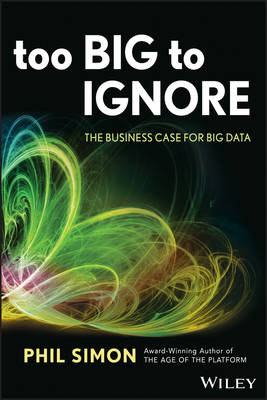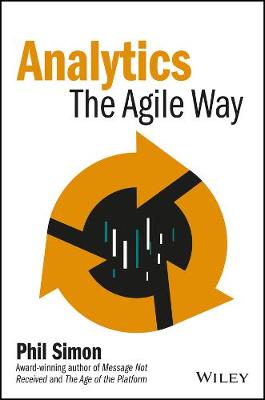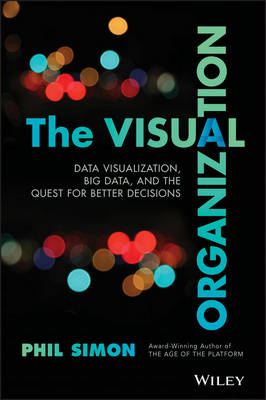Wiley and SAS Business
1 primary work • 3 total works
Book 72
And each of these organizations has embraced Big Data, allowing them to make astute and otherwise impossible observations, actions, and predictions. It's time to start thinking big. In Too Big to Ignore, recognized technology expert and award-winning author Phil Simon explores an unassailably important trend: Big Data, the massive amounts, new types, and multifaceted sources of information streaming at us faster than ever. Never before have we seen data with the volume, velocity, and variety of today. Big Data is no temporary blip of fad. In fact, it is only going to intensify in the coming years, and its ramifications for the future of business are impossible to overstate. Too Big to Ignore explains why Big Data is a big deal. Simon provides commonsense, jargon-free advice for people and organizations looking to understand and leverage Big Data. Rife with case studies, examples, analysis, and quotes from real-world Big Data practitioners, the book is required reading for chief executives, company owners, industry leaders, and business professionals.
For years, organizations have struggled to make sense out of their data. IT projects designed to provide employees with dashboards, KPIs, and business-intelligence tools often take a year or more to reach the finish line...if they get there at all.
This has always been a problem. Today, though, it's downright unacceptable. The world changes faster than ever. Speed has never been more important. By adhering to antiquated methods, firms lose the ability to see nascent trends—and act upon them until it's too late.
But what if the process of turning raw data into meaningful insights didn't have to be so painful, time-consuming, and frustrating?
What if there were a better way to do analytics?
Fortunately, you're in luck...
Analytics: The Agile Way is the eighth book from award-winning author and Arizona State University professor Phil Simon.
Analytics: The Agile Way demonstrates how progressive organizations such as Google, Nextdoor, and others approach analytics in a fundamentally different way. They are applying the same Agile techniques that software developers have employed for years. They have replaced large batches in favor of smaller ones...and their results will astonish you.
Through a series of case studies and examples, Analytics: The Agile Way demonstrates the benefits of this new analytics mind-set: superior access to information, quicker insights, and the ability to spot trends far ahead of your competitors.
The era of Big Data as arrived, and most organizations are woefully unprepared. Slowly, many are discovering that stalwarts like Excel spreadsheets, KPIs, standard reports, and even traditional business intelligence tools aren't sufficient. These old standbys can't begin to handle today's increasing streams, volumes, and types of data.
Amidst all of the chaos, though, a new type of organization is emerging.
In The Visual Organization, award-winning author and technology expert Phil Simon looks at how an increasingly number of organizations are embracing new dataviz tools and, more important, a new mind-set based upon data discovery and exploration. Simon adroitly shows how Amazon, Apple, Facebook, Google, Twitter, and other tech heavyweights use powerful data visualization tools to garner fascinating insights into their businesses. But make no mistake: these companies are hardly alone. Organizations of all types, industries, sizes are representing their data in new and amazing ways. As a result, they are asking better questions and making better business decisions.
Rife with real-world examples and case studies, The Visual Organization is a full-color tour-de-force.


